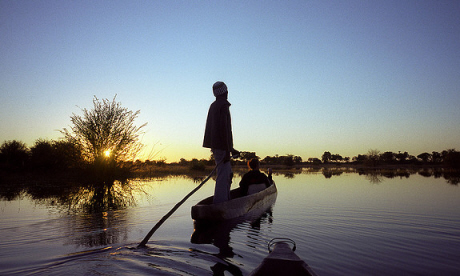
Lyn Hughes looks at the planet's great wetland wildernesses
Covering nearly 16,000 sq km, this pristine wilderness appears all the more remarkable if you approach it from the bone-dry Kalahari.
To really experience the Okavango, allow yourself to be poled through the maze of channels in a mokoro, a traditional dugout canoe – punting in Cambridge will never be the same again. This can be arranged through one of Botswana’s expensive but excellent lodges or camps.
The more active can take a riding safari and experience the exhilaration of galloping alongside herds of zebra and antelope.
When to visit: July to October
Key wildlife: Elephant, hippo, zebra, wildebeest, lion
The largest freshwater wetland in the world covers 230,000 sq km – more than half the size of France. Only part of the Pantanal is a national park, but local farmers protect the area and their cattle seem to coexist with the wildlife with little conflict. The fauna is similar to that found in the Amazon but is much easier to spot in the Pantanal’s open spaces. You may even see a jaguar, particularly in the dry season.
Accommodation is available at fazendas (ranches) or lodges. Explore by boat, 4WD or horseback.
When to visit: May to October (dry season) is best for mammal spotting.
Key wildlife: Jaguar (hard to see), tapir, 650 species of bird
One of Africa’s best-kept wilderness secrets is also among its least visited. As well as prolific birdlife, the papyrus swamps and floodplains of Bangweulu are home to numerous antelope, including vast herds of the endemic black lechwe – sometimes in congregations 10,000 strong.
Of the birds, the prize-spot is the bizarre-looking shoebill stork (not technically a stork), one of Africa’s rarest and shyest birds. Stay at Shoebill Camp and explore by dugout canoe, on foot and by 4WD.
When to visit: April to July is the best time to see lechwe and most birds. August/September is also good.
Key wildlife: Black lechwe, shoebill stork
The spreading fingers of the River Danube flow out into the Black Sea on the Romanian coast, forming Europe’s largest delta. With huge reed beds, lakes, waterways and marsh, the delta is home, or a stopover, for more than 300 species of birds and 45 fish species.
The best way to experience the delta is by boat, whether on a passenger ferry, an organised excursion, or by hiring your own canoe. The delta’s main town, Tulcea, has accommodation; alternatively you can camp or stay on a houseboat.
When to visit: Spring (mid-April to mid-May) and autumn (October/ November) for migratory birds. Otherwise, it’s good year-round, but very hot and humid in summer.
Key wildlife: More than 300 species of bird, including 60% of the world’s pygmy cormorants, half the world’s red-breasted geese (in winter) and Europe’s largest population of pelican
The world’s biggest mangrove forest in the world’s largest delta is also home to the biggest tiger population. There could be more than 500 lurking in this 10,000 sq km wilderness – around a quarter of which is water – that stretches across West Bengal and southern Bangladesh.
In this unique habitat, with its high salinity and regular flooding, tigers have adapted to eating fish and crabs in addition to their more usual diet of mammals. Unfortunately the Sunderban tigers have gained a reputation as man-eaters, with an average of a dozen people a year being killed while fishing or gathering honey.
Take a boat excursion for anything from a few hours to three days to experience this special environment.
When to visit: January to March
Key wildlife: Tiger (hard to see), Ganges dolphin, alligator